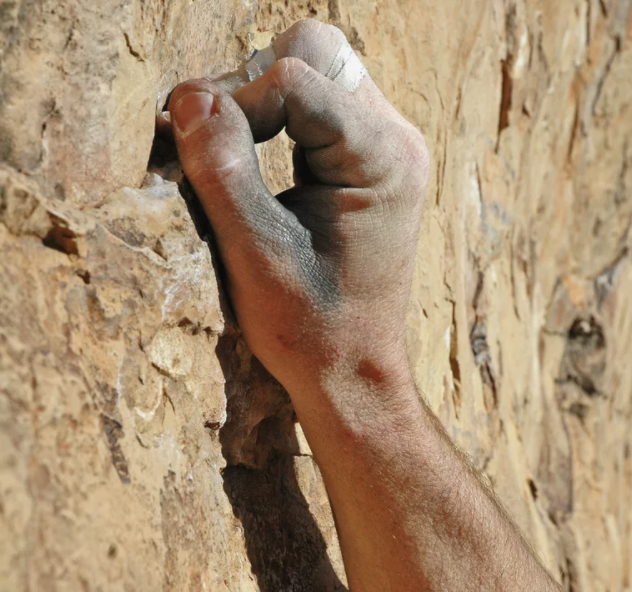Six Basic Finger Grips
Six Basic Finger Grips for Face Climbing
Written by Stewart Green
For the original article and many more informative articles, please visit LiveAbout.com

Using your hands and feet to make four points of contact with the rock surface is based on all rock climbing movements. How you use your fingers, hands, and feet (your handholds and footholds) to attach yourself to the rock is fundamental to climbing effectively and efficiently.
Keep Your Weight Over Your Feet
One of the basic climbing movement techniques is to rely on your feet and legs to propel you up a vertical rock face. Your legs are stronger than your arms. If you keep most of your body weight over your feet, your arms are less likely to get tired. In turn, you're less likely to fall off a route. Learn more about good footwork and tips to help you climb better.
Learn to Use Your Hands
As you advance and grow as a rock climber, you need to use your hands and arms to progress on more challenging routes. On steep rock faces, you can't always rely on your feet to support most of your weight. You have to use your hands and arms to support your body's weight. You can't reach up and grab big holds every time you move. Many handholds are not very big, so you have to learn specialized hand positions to use those holds effectively.
Different Types of Handholds
If you don't know how to grip various kinds of handholds with your fingers and hands, you're not going to have a lot of success as a climber. Every rock face offers a variety of different handholds or grips. There are flat edges, rounded slopers, pockets that fit one finger or your whole hand, vertical flake edges, upside-down holds, and projecting blocks. How you use these handholds is key to your climbing success.
Six Basic Hand and Finger Grips
Here are the six basic finger and hand grips used on handholds:
- Full Crimp Grip
- Half Crimp Grip
- Open-Hand Grip
- Pocket Grip
- Pinch Grip
- Friction Grip
Full Crimps and Half Crimps
Crimping is grabbing small edges with the fingers bent at the middle knuckle. The thumb wraps over the top of the index finger for added pulling power. Crimps are the most popular finger grip position for small incut edges and flakes. Crimping is extremely hard on the fingers. Of all of the finger grips, crimping places the most stress on finger joints and tendons which can lead to finger injuries.
Open Hand Grips
Open-hand gripping is when the climber uses a handhold with his fingers stretched out and the middle knuckle straight. This is the least stressful grip position since the joints are straight. The open-hand grip is used for grabbing slopers since the open-hand grip allows more surface area of the fingers to contact the sloping edge. While the open-hand grip may feel weakest, it will become your strongest, most used grip style with regular training at a gym and outside.
Pinch Grips
The pinch grip is the most common grip, occurring on almost every climb. A pinch hold is held with a half-crimp or open-hand grip with the thumb pinching the opposing edge. Pinches are often found at indoor climbing gyms, making a gym a great place to increase your pinch strength. Pinches are also common on outdoor routes, including ribs of rock, side pulls with a thumb-catch, and large brick-type pinches. Make the pinch grip part of your regular training regimen.
Friction Grips
The friction grip also called palming, is similar to the open hand grip since it involves draping your open palm over a handhold. You then use your palm's skin friction to hang onto the hold. Although it is not often used, (except on slab routes) the friction grip is important to learn since it is used when climbing aretes, dihedrals, and bouldering. Practice the friction grip outside by grabbing features by wrapping your hand on smooth pieces of rock. Palming is often used when climbing a dihedral or chimney. The climber puts the palm on the opposite wall to push with the hands on one wall and feet on the opposite wall. Palming is one of the most important but overlooked finger grips in climbing.
Learn Grips in a Climbing Gym
If you're new to rock climbing, practice all these grips at an indoor rock gym. Many artificial handholds used in a climbing gym are ideal for learning each of the different hand grips. Learn and practice those techniques inside the gym, then take those skills outside to a real cliff.


